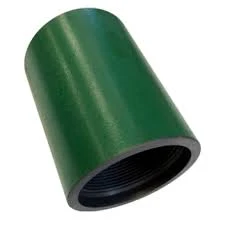- Afrikaans
- Albanian
- Amharic
- Arabic
- Armenian
- Azerbaijani
- Basque
- Belarusian
- Bengali
- Bosnian
- Bulgarian
- Catalan
- Cebuano
- Corsican
- Croatian
- Czech
- Danish
- Dutch
- English
- Esperanto
- Estonian
- Finnish
- French
- Frisian
- Galician
- Georgian
- German
- Greek
- Gujarati
- Haitian Creole
- hausa
- hawaiian
- Hebrew
- Hindi
- Miao
- Hungarian
- Icelandic
- igbo
- Indonesian
- irish
- Italian
- Japanese
- Javanese
- Kannada
- kazakh
- Khmer
- Rwandese
- Korean
- Kurdish
- Kyrgyz
- Lao
- Latin
- Latvian
- Lithuanian
- Luxembourgish
- Macedonian
- Malgashi
- Malay
- Malayalam
- Maltese
- Maori
- Marathi
- Mongolian
- Myanmar
- Nepali
- Norwegian
- Norwegian
- Occitan
- Pashto
- Persian
- Polish
- Portuguese
- Punjabi
- Romanian
- Russian
- Samoan
- Scottish Gaelic
- Serbian
- Sesotho
- Shona
- Sindhi
- Sinhala
- Slovak
- Slovenian
- Somali
- Spanish
- Sundanese
- Swahili
- Swedish
- Tagalog
- Tajik
- Tamil
- Tatar
- Telugu
- Thai
- Turkish
- Turkmen
- Ukrainian
- Urdu
- Uighur
- Uzbek
- Vietnamese
- Welsh
- Bantu
- Yiddish
- Yoruba
- Zulu
well tubing and casing
Well Tubing and Casing Essential Components in Oil and Gas Drilling
In the realm of oil and gas drilling, well tubing and casing play crucial roles in ensuring the integrity and efficiency of the extraction process. These components are vital for maintaining the stability of the wellbore, preventing contamination of groundwater, and facilitating the safe production of hydrocarbons.
What is Well Casing?
Well casing refers to the series of steel pipes that are inserted into the drilled borehole to provide structural support. It serves several essential functions preventing the collapse of the well, isolating different geological formations, and protecting groundwater from contamination by oil or gas. Casing is typically installed in sections, with each section being cemented in place to enhance stability.
The primary types of casing include the surface casing, intermediate casing, and production casing. *Surface casing* is the first level of casing installed, extending from the surface to a depth determined by the local geology. This type of casing is designed to secure the well's upper region and protect it from environmental factors. *Intermediate casing* is used for deeper sections and can be required in cases of challenging geological conditions. Finally, *production casing* is installed to enable the connection between the well and the production facility, allowing for the extraction of oil and gas.
What is Well Tubing?
well tubing and casing

While casing provides the structural backbone of the well, tubing is used to facilitate the actual flow of hydrocarbons from the reservoir to the surface. Tubing is inserted through the production casing and allows for the safe transport of oil or gas by providing a conduit that is both protected and optimally sized.
The tubing is usually smaller in diameter than the casing and is designed to withstand high pressures and corrosive environments. Choosing the right type of tubing is essential for the efficiency of production operations, as it affects flow rates and the ability to manage pressure. Tubing can be replaced as needed, offering flexibility in the management of the well over its lifecycle.
The Importance of Proper Installation and Maintenance
The effectiveness of well tubing and casing heavily relies on their proper installation and ongoing maintenance. Poor installation can lead to well integrity issues, resulting in leaks or blowouts, which pose significant safety risks and environmental concerns. Regular inspections and maintenance are crucial to ensure that both tubing and casing remain in optimal condition throughout their operational life.
In conclusion, well tubing and casing are integral components of the oil and gas extraction process. Their roles in providing structural support, protecting groundwater, and enabling efficient hydrocarbon flow cannot be overstated. As technology advances, the materials and techniques used for casing and tubing continue to evolve, enhancing safety and production efficiency in the ever-demanding energy sector.
-
Well Casing Extension Couplings – Applications and InstallationNewsJun.06,2025
-
Types of Crossover Subs in Drilling & CompletionNewsJun.06,2025
-
Key Features of High-Quality Tubing Pup JointsNewsJun.06,2025
-
Installation and Maintenance Tips for Steel Couplings for PipeNewsJun.06,2025
-
How to Select the Right Pup Joint for Oil & Gas OperationsNewsJun.06,2025
-
Applications of Stainless Steel Pipe CouplingsNewsJun.06,2025







